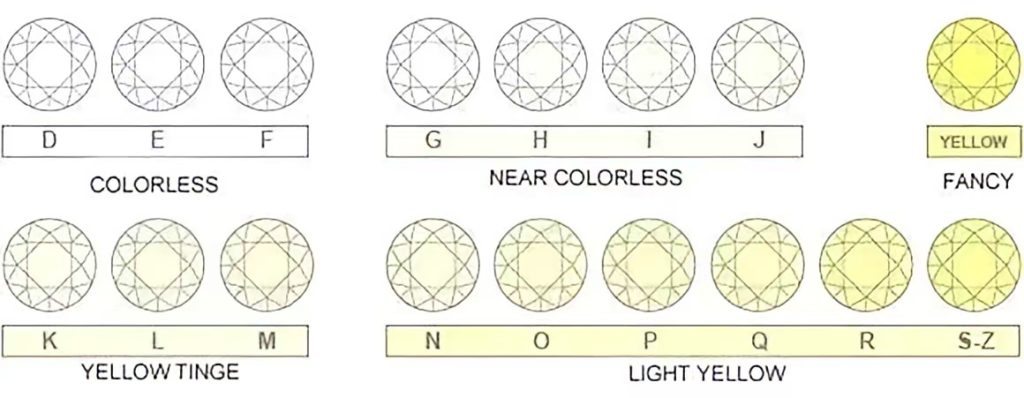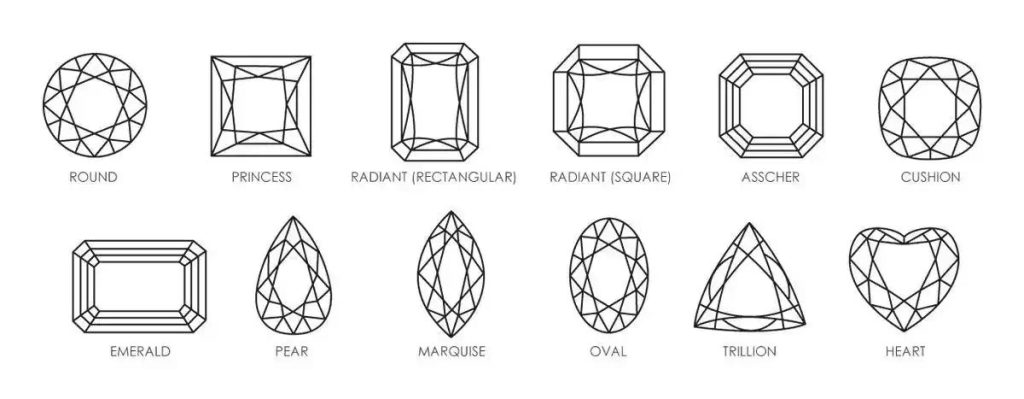Diamond Guide: From Origin to Care
Diamonds are one of nature’s most fascinating creations, valued for their brilliance, durability, and rarity. This article explores essential diamond knowledge, covering diamond origin, weight, clarity, color, cut, and maintenance. Each section provides valuable insights to help you appreciate and care for your diamond jewelry.
Diamond Origin and Formation
The origin of diamonds dates back billions of years. These gems form deep within the Earth’s mantle under immense heat and pressure. They crystallize from carbon (C) and are later brought to the surface through volcanic eruptions, embedded in kimberlite or lamproite rocks.
Occasionally, diamonds contain trace elements like iron, chromium, or magnesium, which are known as inclusions or impurities. Fewer inclusions result in higher diamond clarity and value.
Historically, diamonds were first discovered in India, followed by Brazil. Today, the leading diamond-producing countries include South Africa, Angola, Russia, and Congo, with Africa hosting the majority of global diamond reserves.
Diamond Weight: The Importance of Carats
A diamond’s weight is measured in carats (ct), where one carat equals 200 milligrams or 0.2 grams. Each carat can be divided into 100 points. For instance, a 0.75-carat diamond is called a 75-pointer, and a 0.02-carat diamond is a 2-pointer.
| Diamond Weight | Carats (ct) | Milligrams (mg) | Grams (g) | Points |
| 1 Carat | 1.00 ct | 200 mg | 0.2 g | 100 points |
| 0.75 Carat | 0.75 ct | 150 mg | 0.15 g | 75 points |
| 0.50 Carat | 0.50 ct | 100 mg | 0.10 g | 50 points |
| 0.25 Carat | 0.25 ct | 50 mg | 0.05 g | 25 points |
| 0.02 Carat | 0.02 ct | 4 mg | 0.002 g | 2 points |
While larger diamonds are rarer and generally more valuable, weight alone does not determine a diamond’s overall worth. Other factors like diamond clarity, color, and cut are equally important.
Diamond Clarity: The Art of Purity
Diamond clarity evaluates the absence of internal or external flaws. It is assessed under 10x magnification, focusing on two aspects:
- Internal inclusions formed during natural crystallization.
- Surface blemishes caused by the cutting and polishing process.

Diamonds with minimal inclusions offer higher brilliance and are more desirable. However, many inclusions are invisible to the naked eye, so clarity should be balanced with other qualities when selecting a diamond.
Diamond Color: A Critical Quality Factor
The color of a diamond significantly influences its value. The ideal diamond is colorless, as it reflects light more brilliantly than diamonds with yellow or brown tints.
The GIA color grading scale ranges from D (colorless) to Z (light yellow or brown). Diamonds graded between D and H are highly sought after, as they appear exceptionally bright and pure.

Diamond Cut: Unleashing Radiance
The cut of a diamond is vital to its beauty. An expertly cut diamond optimizes light reflection, creating mesmerizing sparkle and fire. The cut quality depends on precise proportions, angles, and symmetry.

Key cut evaluation criteria include table percentage, crown angle, pavilion depth, girdle thickness, and finish (polish and symmetry). A superior cut can enhance a diamond’s appearance, even if it has minor flaws in color or clarity.
Diamond Shapes: Style and Elegance
Diamonds come in various shapes, each offering a unique aesthetic. The round brilliant cut is the most popular due to its unmatched brilliance. Other shapes, such as princess, oval, pear, and emerald cuts, cater to diverse style preferences.

Choosing a diamond shape is often a personal decision, influenced by taste and the intended setting.
Diamond Maintenance: Ensuring Longevity
Proper maintenance is essential to preserving a diamond’s brilliance and structural integrity. Here are three common cleaning methods:
- Soap and Water Method: Soak the diamond in warm water with a mild detergent, gently scrub with a soft toothbrush, rinse, and dry with a lint-free cloth.
- Cold Water Soak: Immerse the diamond in cold water for 30 minutes, lightly brush all sides, and rinse thoroughly before patting dry with tissue paper.
- Jewelry Cleaning Solution: Use a store-bought jewelry cleaning kit, following the manufacturer’s instructions for a quick and effective cleanse.
Tips for Diamond Care
- Avoid exposing diamonds to chlorine or harsh chemicals, as they may damage the setting.
- Remove diamond jewelry when performing heavy-duty tasks to prevent accidental scratches or chips.
- Schedule annual inspections with a jeweler to check the security of the setting and maintain the diamond’s luster.
Discover More About Diamonds
Diamonds symbolize elegance, luxury, and timeless beauty. By understanding their origin, weight, clarity, color, and cut, you can make informed decisions when purchasing and caring for your diamond jewelry.
For more insights into diamond knowledge and expert tips, please visit our website to explore further.